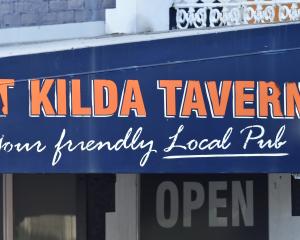
While Oceana, and 44 other mining operations, are grappling with mounting political pressure over environmental issues in the Philippines, its Haile open pit development mine is gathering pace, with expectations of full commercial production within a few weeks.
Craigs Investment Partners had researchers visit the US site earlier this month, describing it as a high-quality project which would underpin Oceana's mine portfolio for the next decade.
About 7500oz of gold has been extracted from Haile to date and Oceana has said Haile was ``on target'' to be in full commercial production by April-May.
In the short term Oceana is predicting production this calendar year of 150,000oz-170,000oz, while by calendar 2020 production is expected to be 250,000oz for the year. The average grade of gold to be extracted from 2017-22 is forecast to be 1.57 grams per tonne (g/t).
Craigs broker Peter McIntyre said construction was finished and plant commissioning to date had been successful and the ore body had much more on offer than the results captured in the most recent technical report.
An optimisation study of the Haile project is due in mid-2017, which could lead to permit applications to go underground at the Horseshoe prospect, or open up pit extensions.
However, Mr McIntyre noted extracting that extra value was contingent on Oceana gaining permit approvals from local authorities, a process which could take several years.
``Haile is a high-quality project that underpins Oceana's portfolio for the next 10-plus years, which means Oceana has time to manage the approvals process and maximise the asset,'' Mr McIntyre said.
``Permitting is the key constraint to unlocking value,'' he said.
The permitting risk lay in the inclusion of underground plans that would trigger the need for an environmental impact study, which could take two to three years to complete, Mr McIntyre said.
He said Oceana was hoping that a potential underground operation would only require a environment assessment for approval, which was less arduous than an environmental impact study.
Although Oceana recently flagged it needed to boost its $US380million ($NZ549million) Haile development budget by 5%-10%, Mr McIntyre said that had been offset by some design improvements.
Mining was ahead of plan, with 17 million tonnes having been moved and 780,000 tonnes of ore processed delivering 1.46g/t, above plan, from the
Mill Zone pit. Mill Zone is at present 90m below the surface and must go a further 95m down to reach its design base.
There are seven open pits in Oceana's final design.
A second pit being developed, Snake, and was about three to four months ahead of plan, Mr McIntyre said.
Last year, Oceana completed 35,000m of drilling at Haile and had budgeted for a further 32,000m this year.
The drilling at the Horseshoe prospect had confirmed it to be a viable underground project, while drilling at the adjacent Palomino prospect had been ``encouraging'', Mr McIntyre said.












